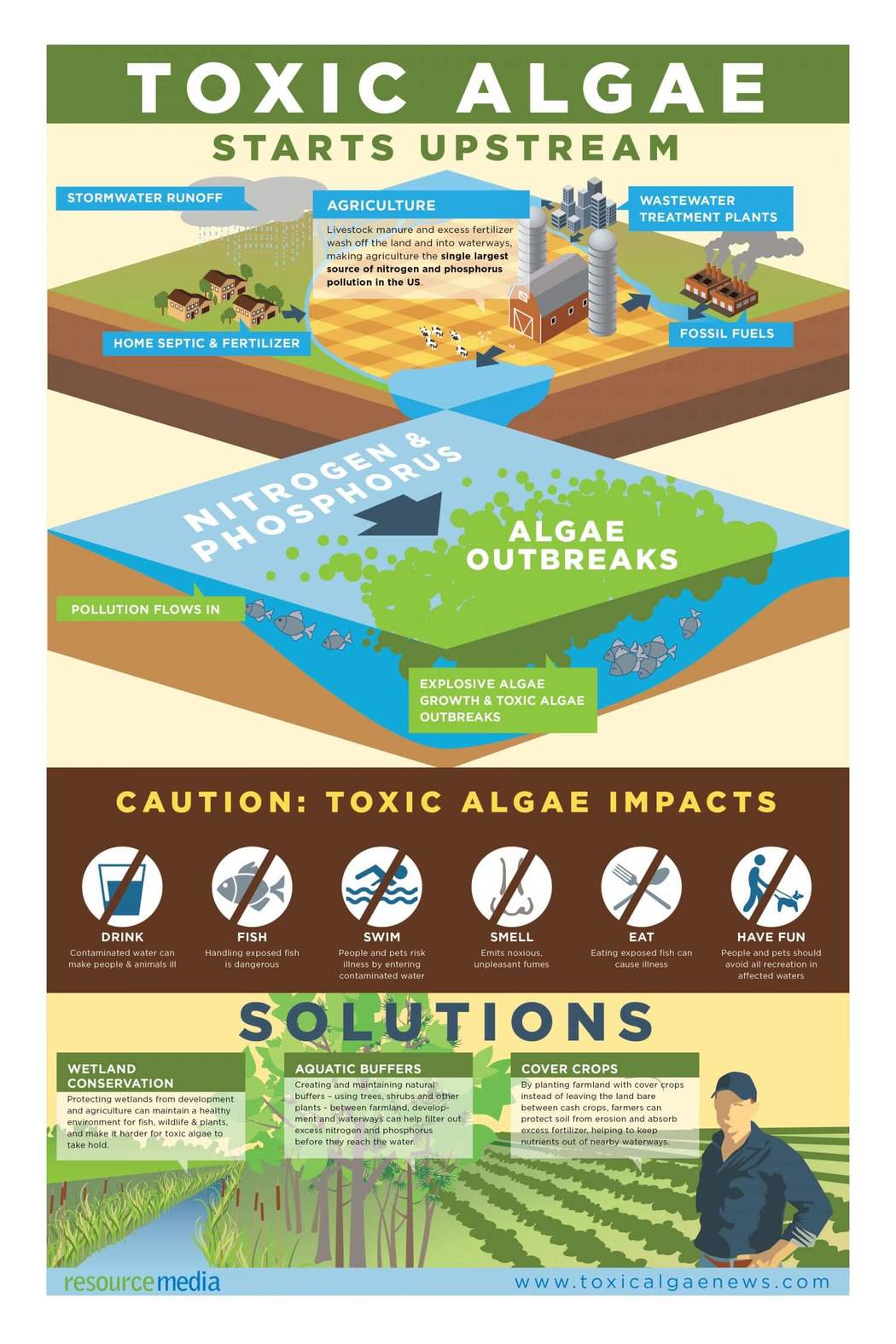How Nitrogen and Phosphorus Fertilizers Cause Deadly Algae Outbreaks Downstream
- by
- Gene Caballero
- May 15, 2020
It’s a little known fact that the powerful fertilizers we use on our lawns, gardens, and even those used by farmers are often the cause of increasingly deadly algae outbreaks. This infographic shows how phosphorus and nitrogen flow downstream to cause deadly algae blooms.
What sources lead to deadly algae blooms?
Phosphorus and nitrogen rich fertilizers like those used in the lawn and garden are a primary cause of algae blooms in suburbs. However in rural areas, farm fertilizers and animal waste result in nutrient rich runoff. Which flows downstream and results in deadly algae blooms.
Why do algae blooms occur downstream from the source?
Algae blooms occur downstream because nutrients flow down the watershed. This leads to all of the nutrients collecting in the water downstream. With all of these nutrients, algae easily reproduces quickly. Algae deplete the water of oxygen and suffocate any fish around.
Why are algae blooms so bad?
Algae blooms are toxic to the fish that live in the water, and some species of algae can even kill pets that go for a swim. Even people are at risk of getting ill if they swim in algae impacted waters. Furthermore, you can’t drink water which has been contaminated by an algae bloom, or even eat fish which are exposed to the bloom.
How can algae blooms be prevented at the local level?
Homeowners can limit algae blooms in their areas by not over-applying fertilizers and following proper fertilizer application techniques. Furthermore homeowners should only use phosphorus containing fertilizers to start a new lawn, or at most once a year on an established lawn. Additionally, aerating your lawn and adding a top dressing, can ensure that your lawn will retain the nutrients you add to it, and they won’t simply wash downstream.
How can massive algae blooms be prevented?
Deadly algae blooms can be prevented through wetland conservation, adding aquatic buffers and using cover crops to soak up nutrients on farmland. Farms are the biggest cause of phosphorus and nitrogen build up in watersheds. But we all need farms to live. So it will take a national effort to alleviate algae blooms in watersheds.
Your Green Pal's infographic "How Nitrogen and Phosphorus Fertilizers Cause Deadly Algae Outbreaks Downstream" explains the detrimental impact of certain fertilizers on water ecosystems. Phosphorus and nitrogen from lawn, garden, and farm fertilizers, as well as animal waste, are primary causes of harmful algae blooms, especially in suburban and rural areas. These nutrients flow downstream, accumulating in water bodies and fostering rapid algae growth.
Algae blooms deplete oxygen in the water, suffocating fish, and can be toxic to pets, humans, and aquatic life, rendering water unsafe for swimming, drinking, or fishing.
Learn more about how toxic algae blooms work and do your part to help prevent them. Share this infographic so that we can work together, and prevent the spread of toxic algae blooms.
Powered by Froala Editor











